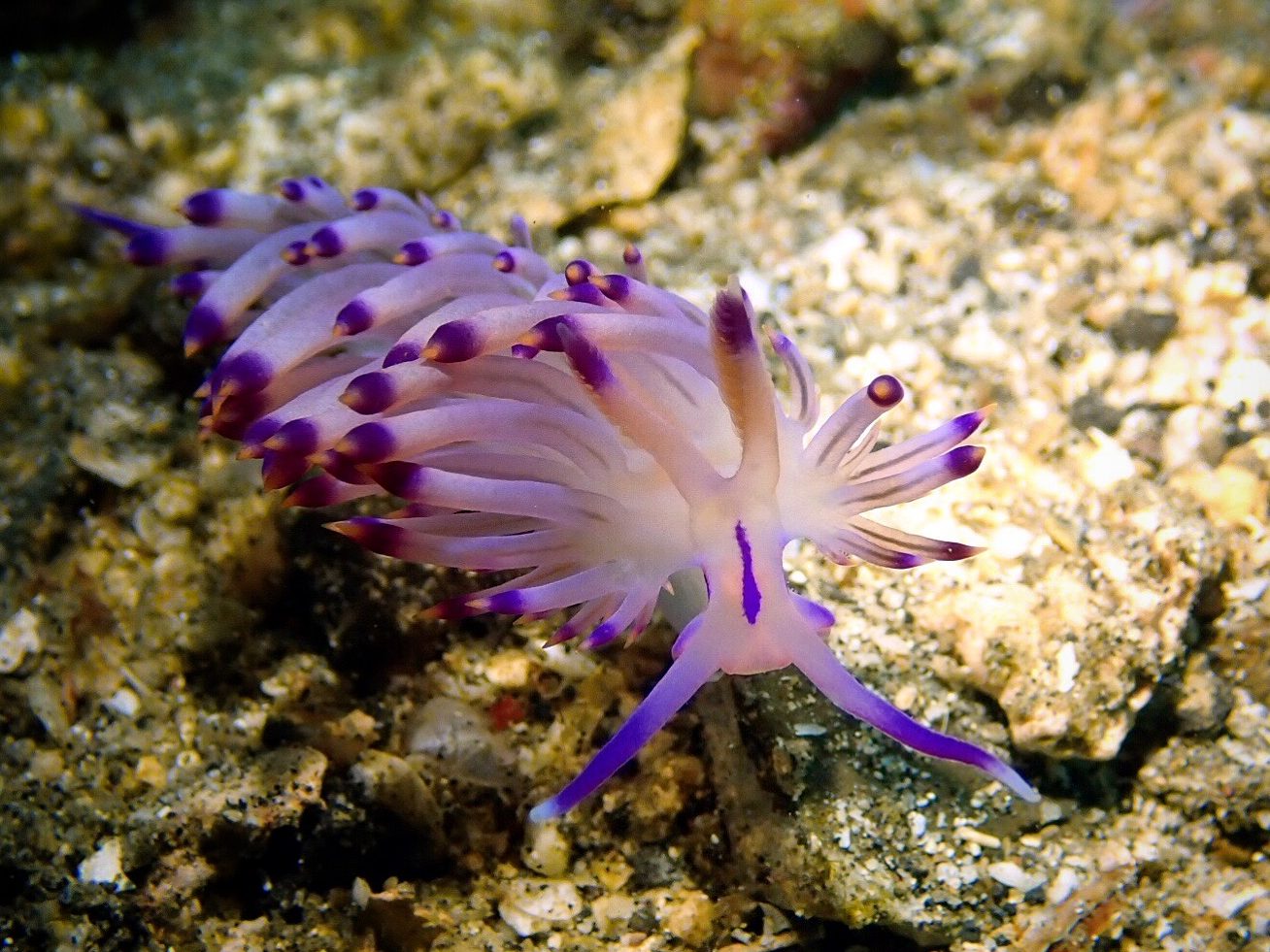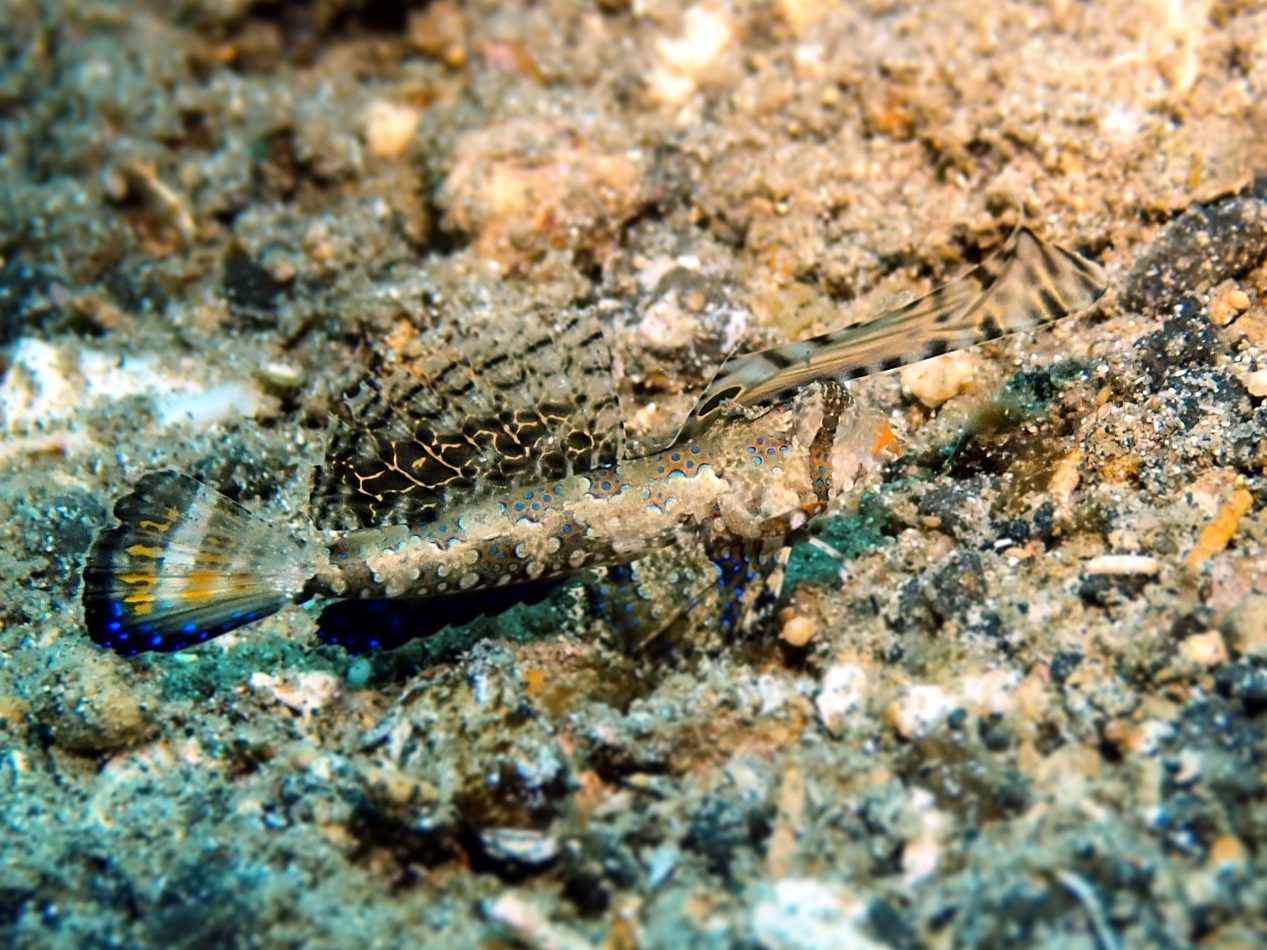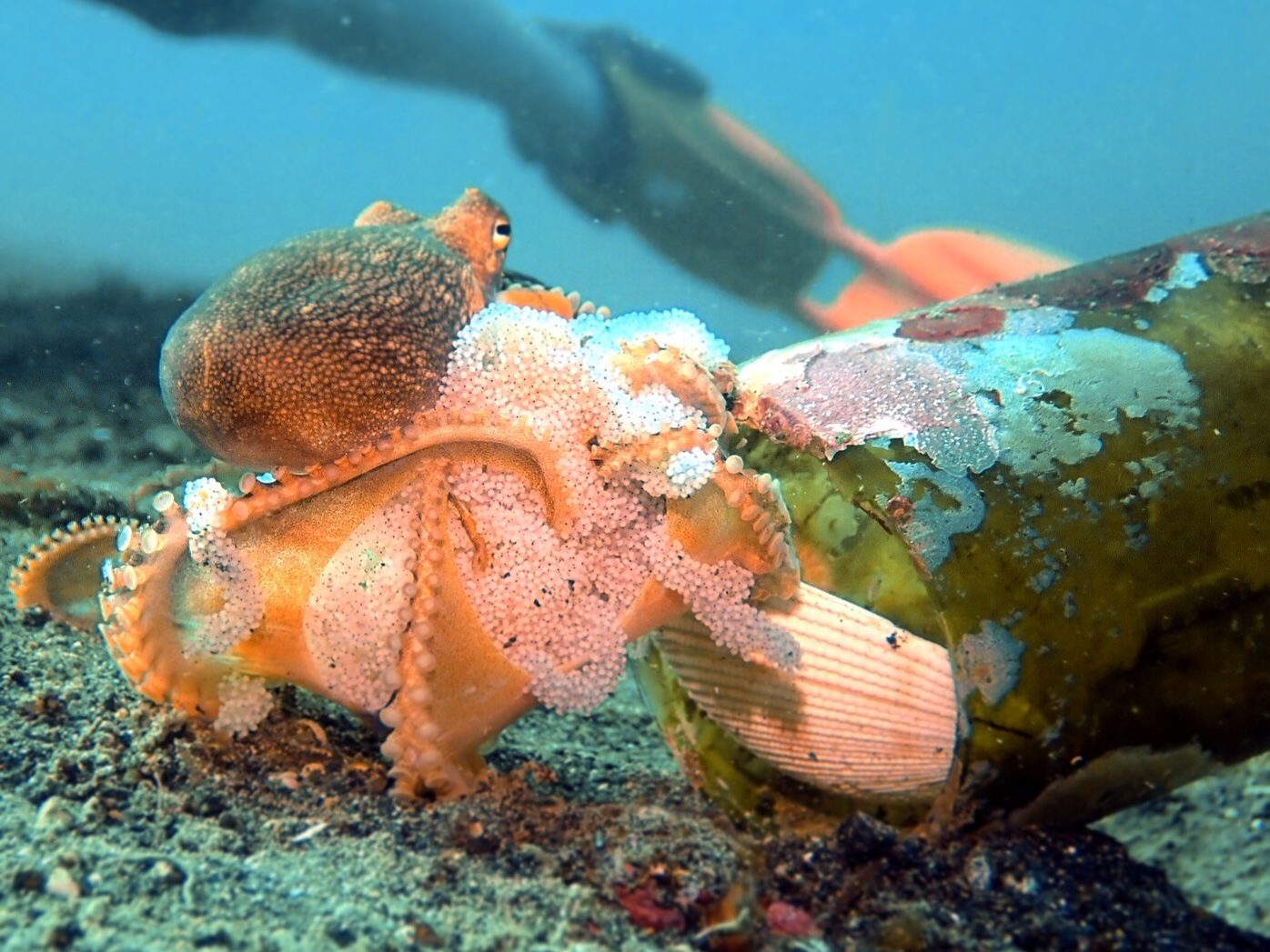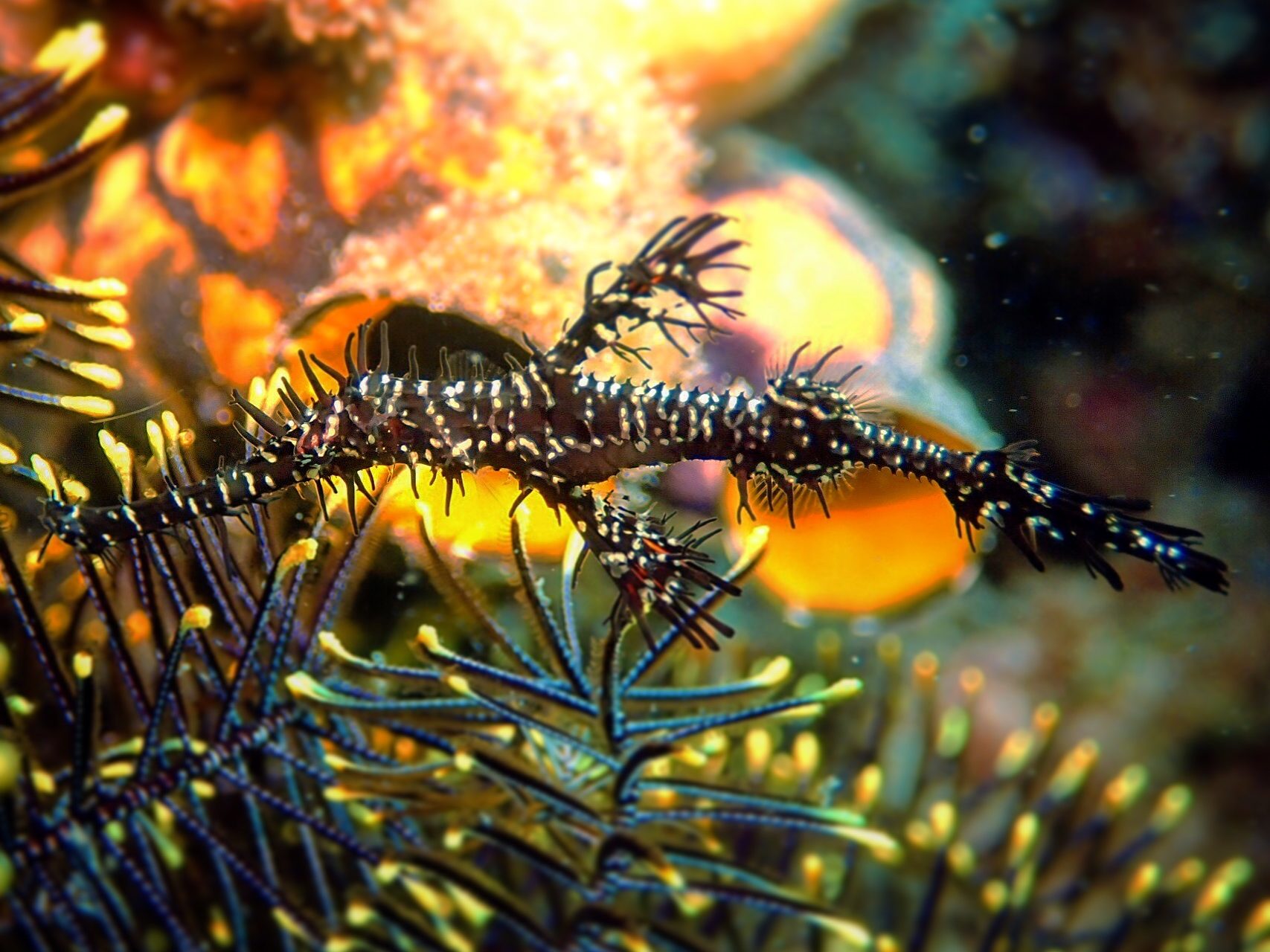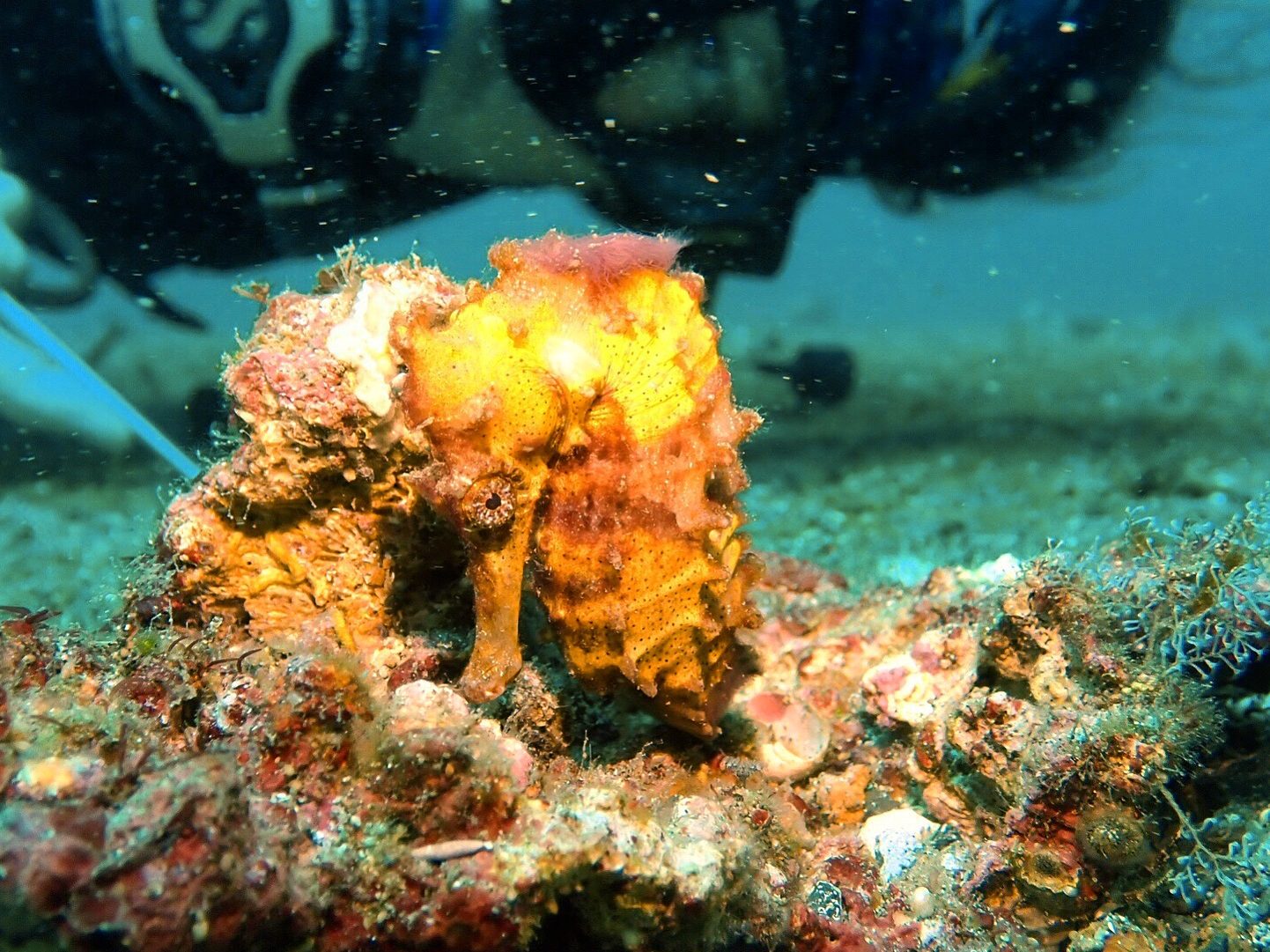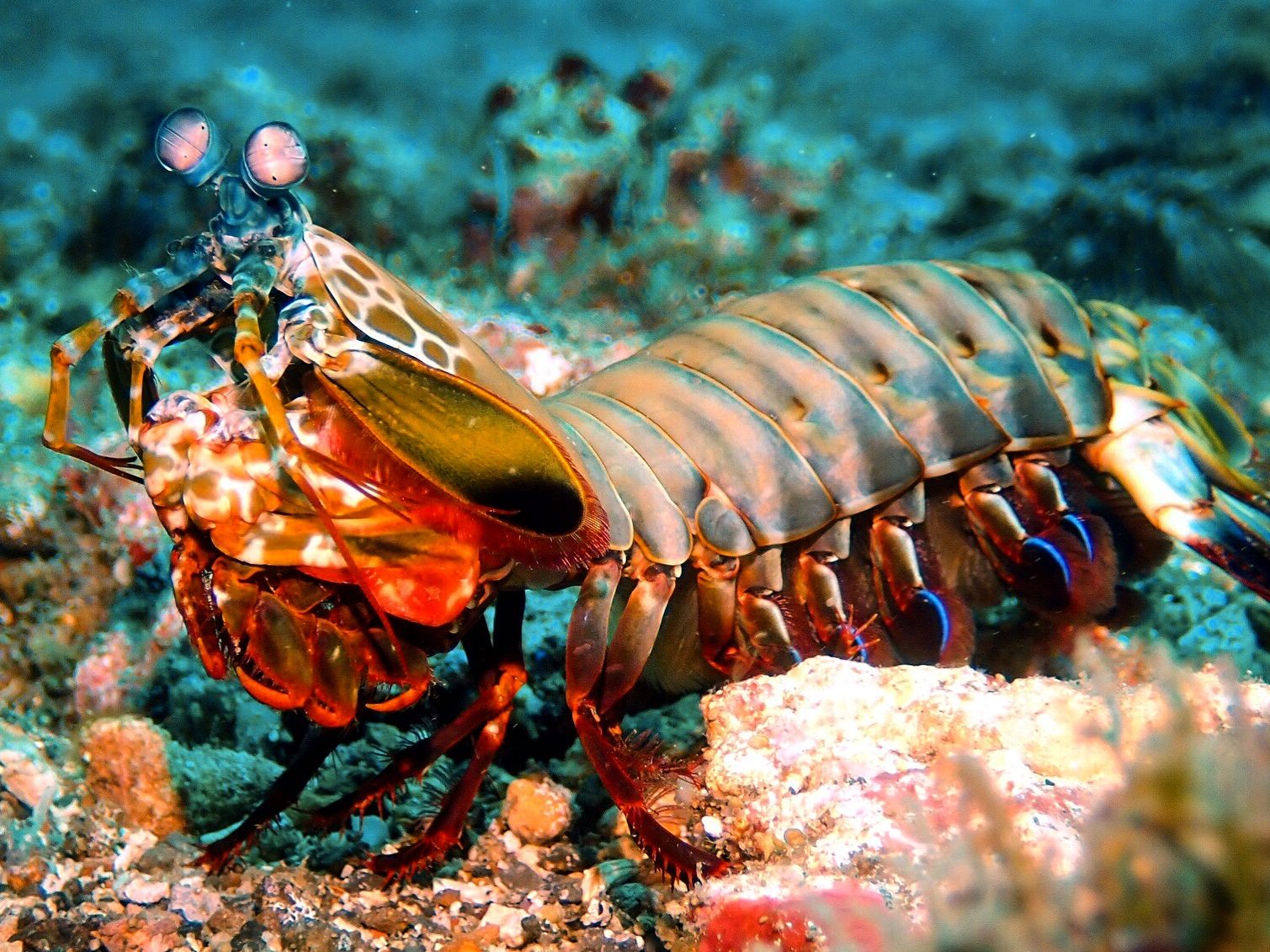Nudibranchs, the pride and joy of many seasoned divers. Finding one of these little colorful blobs of jelly takes a keen eye, and results in some serious bragging rights. Why mother nature decided to make sea slugs in so many different shapes and sizes and colors is beyond me. I mean land slugs are kind of gross. Sea slugs though? Show me more!
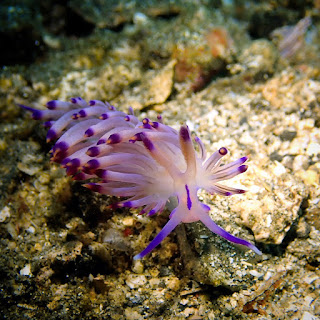 |
| Not a fan of slugs? Check out this frilly purple dude and tell me how you feel about them now! (Flabellina rubrolineata, size: 25mm) |
Their vibrant colors are derived from the foods that they eat. It’s a bit ironic that they come in so many vivid colors, because nudibranchs themselves can only see dark and light. Color isn’t the only thing that nudibranchs obtain from their food. Some species even reuse their prey’s foul-tasting poisons by secreting them to use as their own method of defense.
‘Nudibranch’ comes from the Latin word nudus, or ‘naked,’ and the Ancient Greek word bránkhia, or ‘gills,’ because they wear their gills as fuzzy little pom poms on their backs.
 |
| Show off those gills! (Don’t tell him that they’re not wings.) (Tambja morosa, size: 10 cm) |
There are over 2,000 species (3,000 according to some sources) of these little blobs of rainbow, and new species are being identified all the time. There are so many different kinds that the majority of them don’t even have common names, so I’ve included the scientific names, or my best guess at what they are anyway. If you happen to be a nudibranch expert and notice an error, feel free to correct me.
Nudis are all hermaphrodites, and lay eggs in pretty little ribbons, spiraled into the shape of a rose.
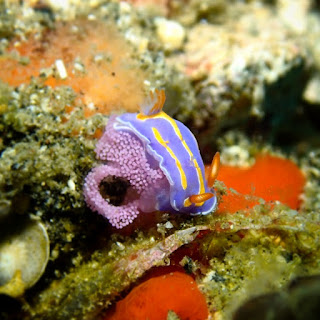 |
| I didn’t even realize that this little guy was laying eggs until zooming in on the photo. (Mexichromis trilineata, size: 12 mm) |
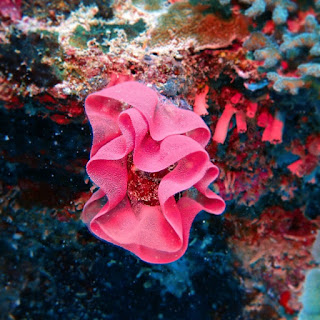 |
| Nudibranch egg masses end up looking sort of like a rose, and billow with the water movement. |
Here are just a few of the many nudibranchs we spotted in Lembeh, Indonesia. Some of these were so teeny tiny that I couldn’t even tell what I was looking at until I zoomed in on the camera.
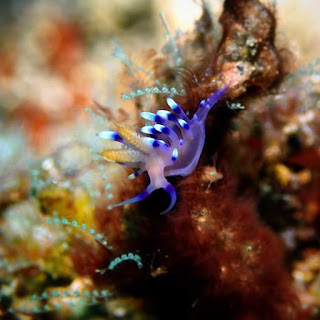 |
| Flabellina exoptata, size: 2 cm
|
 |
| Costasiella kuroshimae, size: 7mm; otherwise known as the “Shaun the Sheep” nudi. This little guy was one of those instances where I was staring at a spec and couldn’t see the details of that spec until after a good deal of zooming after the dive.
|
 |
| A close relative to Shaun the Sheep, Costasiella usage, size: 10 mm. You can see this one’s frilly things look more like leaves though.
|
|
|
|
Siphopteron sp. 4 mm in size, heck you can see each individual grain of sand around him. I’m not even going to try to describe what you’re looking at here (because I don’t know. Shhh).
|
Some of them were as large as, or at least as long as my hand.
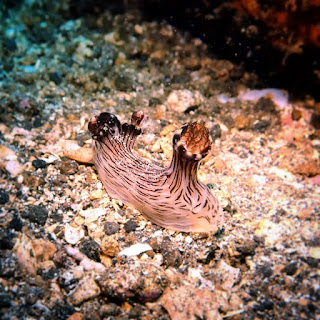 |
| Jorunna rubescens, size: 20 cm
|
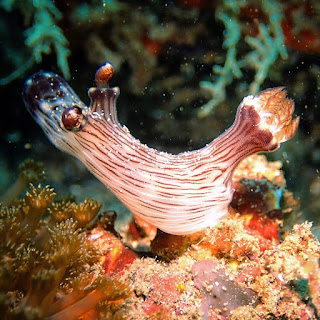 |
| Jorunna rubescens, size: 20 cm
|
 |
| Two ramen nudis doing the dirty. (Don’t they look like a package of dried, instant ramen? I made that name up.) (Pteraeolidia semperi, size: 10 cm)
|
But the majority were the length of a joint or two on my finger.

|
| Same Flabellina rubrolineata from above, with my index finger for size reference. (Size: 25 mm) |
Some nudibranchs, instead of having one little pom pom of gills on their backs, are covered fancy frills, or cerata, which accomplish the tasks of breathing, digestion, and defense.
 |
| Pteraeolidia semperi, size: 10 cm, or a little longer than the width of the biggest iPhone. |
 |
| Pteraeolidia ianthina, otherwise known as a “Blue Dragon.” Size: 7 cm, or the length of a pinky finger. |
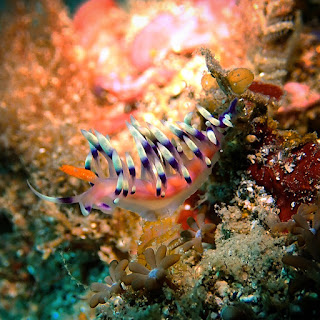 |
| Flabellina exoptata, size: 2 cm, or the width of your thumb.
|
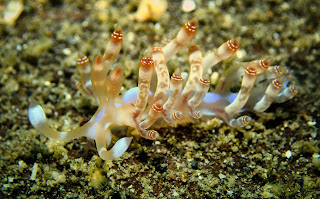 |
| Flabellina bilas, size: 25 mm.
|
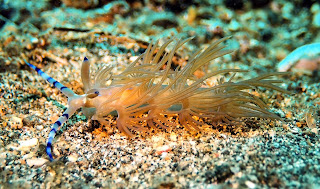 |
| Pteraeolidia semperi, size: 10 cm.
|
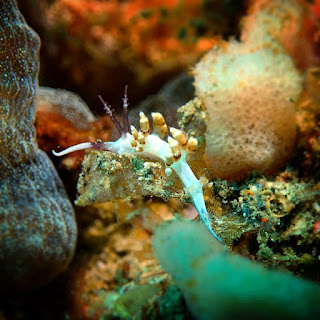 |
| Flabellina sp. Size: about the width of my pinky. |
A couple varieties of nudibranch, such as this guy, hide their gills in a little groove under their dorsum (or upper side).
 |
| Armina sp., size: 10 cm. |
The little bunny ears are called rinophores, from the Greek word rino meaning ‘nose’. These two noses act as chemical receptors for finding food and mates. They also make nudibranchs more visible to predators though, so nudibranchs are able to withdraw their noses (as well as their gills) into little pockets in order to hide.
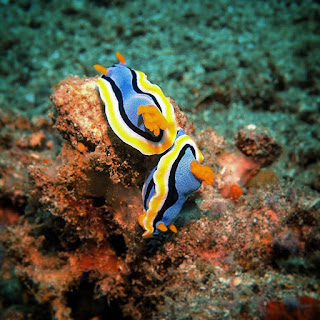 |
| G’day, mate! A pair of Chromodoris annae. Size: 2 cm.
|
Now you see the bunny ears…
 |
| Polycera abei, size: 2 cm.
|
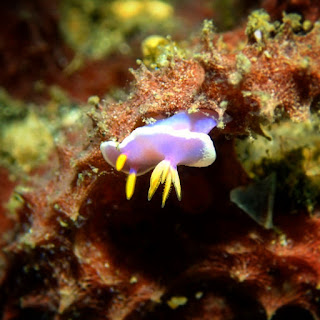 |
| Hypselodoris apolegma, size: 2 cm.
|
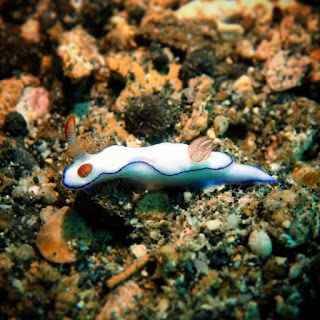 |
| Thorunna daniellae, size: 15 mm, or two grains of long-grain rice sitting end to end.
|
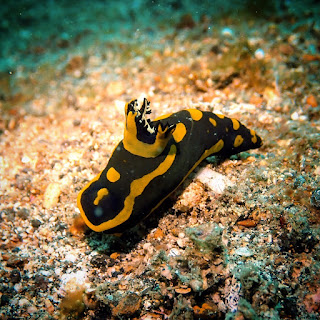 |
| Tambja gabrielae, size: 65 mm, the size of your pinky finger.
|
A close look at the rinophores shows that they are almost feather-like. This gives them greater surface area, which allows for even more effective nosing around.
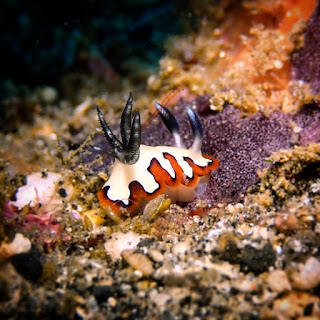 |
| Goniobranchus fidelis, size: 3 cm, the size of a bottle cap.
|
As you can see, these colorful little blobs really do come in every variety, shape, and size. They are mother nature’s gift of diversity, hidden in a miniature world beneath the surface of the ocean.
 |
| Doriprismatica sibogae, size: 10 cm; the size of a small potato. |
 |
| Nembrotha kubaryana, size: 12 cm; as long as a can of soda. |
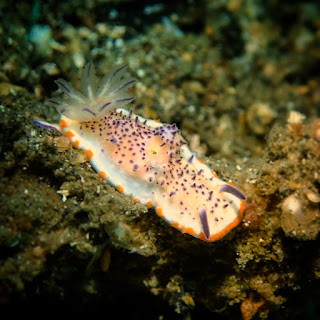 |
| This poor dude looks like someone took a bite out of his back. (Mexichromis multituberculata, size: 3 cm.) |
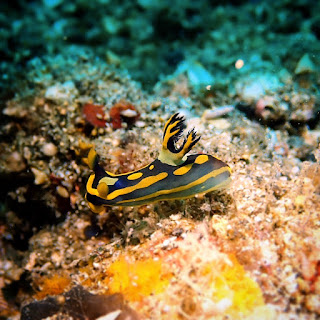 |
| Tambja gabrielae, size: 65 mm, the size of your pinky finger. |
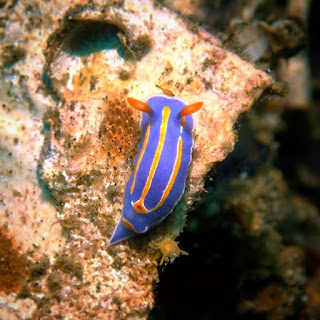 |
| Mexichromis trilineata, size: 12 mm; the size of an earlobe. |
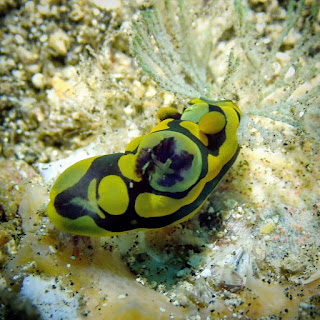 |
| Tambja gabrielae, size: 65 mm, the size of your pinky finger. |
 |
| Hypselodoris emma, size: 4 cm; the size of a Bic pen cap. |
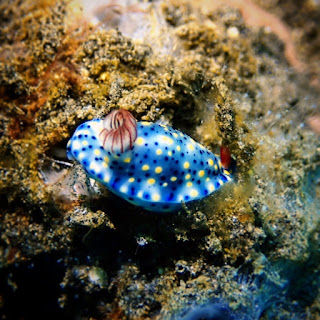 |
| Hypselodoris sp., size: 3 cm. I shall call this one the Starry Night nudi, because he reminds me of the painting. |
Did you find a favorite nudibranch? Let me know in the comments below! Still not impressed? I’ve got nothing for you then. Next time I’ll try showing you something with more tentacles.
